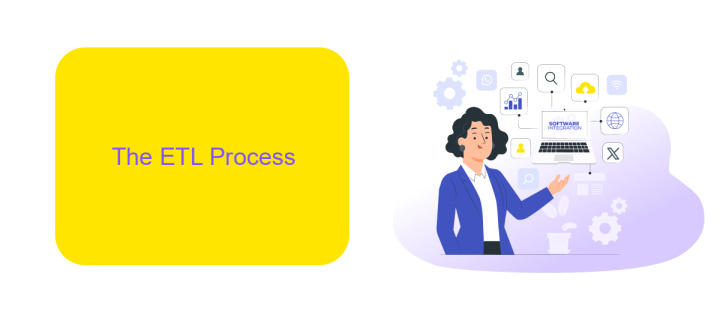What is ETL in Data Science
ETL, which stands for Extract, Transform, Load, is a crucial process in data science and analytics. It involves extracting data from various sources, transforming it into a suitable format, and loading it into a data warehouse or database. This process ensures that data is clean, consistent, and ready for analysis, enabling data scientists to derive meaningful insights efficiently.
Introduction to ETL in Data Science
ETL, which stands for Extract, Transform, Load, is a fundamental process in data science that involves extracting data from various sources, transforming it into a suitable format, and loading it into a target system for analysis. This process is crucial for ensuring data quality and consistency, enabling data scientists to derive meaningful insights from large datasets.
- Extract: This step involves collecting data from multiple sources such as databases, APIs, and flat files.
- Transform: The raw data is cleaned, normalized, and transformed into a structured format suitable for analysis.
- Load: The transformed data is then loaded into a data warehouse, database, or another target system for further analysis.
In modern data science workflows, ETL processes can be automated using various tools and services. For instance, ApiX-Drive offers an efficient solution for setting up integrations and automating data workflows, allowing data scientists to focus on analysis rather than data preparation. By leveraging such tools, organizations can streamline their ETL processes, ensuring timely and accurate data availability for decision-making.
The ETL Process

The ETL process, which stands for Extract, Transform, Load, is a crucial component in data science for managing and manipulating data. During the extraction phase, data is collected from various sources such as databases, APIs, and flat files. This raw data is often unstructured and needs to be organized before it can be useful. Tools like ApiX-Drive can simplify this step by providing seamless integrations with multiple data sources, enabling efficient data collection without the need for extensive coding.
In the transformation phase, the extracted data is cleaned, normalized, and transformed into a suitable format for analysis. This may involve filtering out irrelevant information, handling missing values, and converting data types. Finally, in the load phase, the transformed data is loaded into a data warehouse or another storage system where it can be accessed for analysis and reporting. The ETL process ensures that data is accurate, consistent, and ready for insightful analysis, making it an indispensable part of any data-driven decision-making strategy.
Why ETL is Important in Data Science

ETL (Extract, Transform, Load) is a critical process in data science as it ensures that data is properly gathered, cleaned, and made ready for analysis. Without ETL, data scientists would struggle to work with inconsistent and unstructured data, leading to inaccurate results and insights.
- Data Consistency: ETL processes ensure that data from multiple sources is standardized and consistent, making it easier to analyze.
- Efficiency: Automating ETL tasks saves time and reduces the risk of human error, allowing data scientists to focus on analysis rather than data preparation.
- Data Quality: ETL helps in cleaning and transforming data, ensuring high-quality datasets that lead to reliable insights.
- Integration: Tools like ApiX-Drive simplify the integration of various data sources, streamlining the ETL process and enhancing productivity.
In summary, ETL is indispensable in data science for ensuring data quality, consistency, and efficiency. By automating and streamlining data preparation tasks, ETL enables data scientists to focus on extracting valuable insights and making data-driven decisions. Services like ApiX-Drive further enhance this process by facilitating seamless integration of diverse data sources.
Challenges in Implementing ETL

Implementing ETL (Extract, Transform, Load) processes in data science presents several challenges that can impact the efficiency and accuracy of data workflows. One of the primary hurdles is ensuring data quality and consistency. Extracting data from multiple sources often leads to discrepancies and inconsistencies that require meticulous cleaning and transformation to maintain data integrity.
Another significant challenge is managing the scalability of ETL processes. As data volumes grow, the ETL pipelines must be robust enough to handle increased loads without compromising performance. This necessitates the use of efficient algorithms and scalable infrastructure, which can be both complex and costly to implement.
- Data Quality and Consistency
- Scalability and Performance
- Integration Complexity
- Real-time Processing
Integration complexity is another hurdle, especially when dealing with diverse data sources and formats. Tools like ApiX-Drive can simplify this process by providing seamless integration solutions, enabling automated data transfers between various platforms. However, even with such tools, ensuring real-time processing and minimal latency remains a challenge that requires continuous optimization and monitoring.


Best Practices for ETL
Implementing ETL processes effectively requires adhering to best practices to ensure data integrity, efficiency, and scalability. First, always validate and clean your data at the initial extraction phase to avoid propagating errors through the pipeline. Utilize incremental extraction techniques to handle large datasets efficiently and reduce the load on your source systems. Additionally, ensure your transformations are well-documented and version-controlled to facilitate debugging and future enhancements.
Automation and monitoring are crucial for robust ETL operations. Use tools like ApiX-Drive to streamline integrations and automate data flows between different systems. This not only reduces manual effort but also minimizes the risk of errors. Implement comprehensive logging and alerting mechanisms to monitor ETL processes in real-time, enabling quick identification and resolution of issues. Lastly, always conduct thorough testing before deploying any ETL changes to production, ensuring that the data quality and performance meet your requirements.
FAQ
What is ETL in Data Science?
Why is ETL important in Data Science?
What are the common steps involved in the ETL process?
How can ETL processes be automated?
What challenges can arise during the ETL process?
Routine tasks take a lot of time from employees? Do they burn out, do not have enough working day for the main duties and important things? Do you understand that the only way out of this situation in modern realities is automation? Try Apix-Drive for free and make sure that the online connector in 5 minutes of setting up integration will remove a significant part of the routine from your life and free up time for you and your employees.

